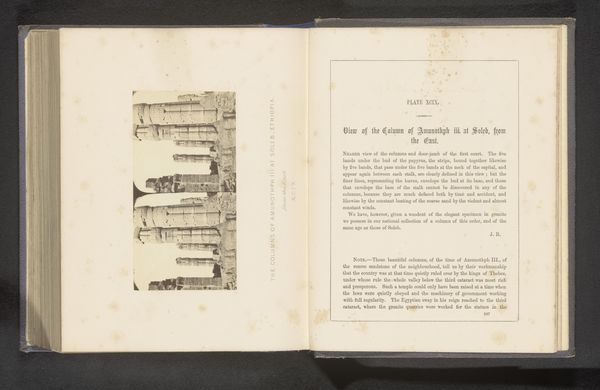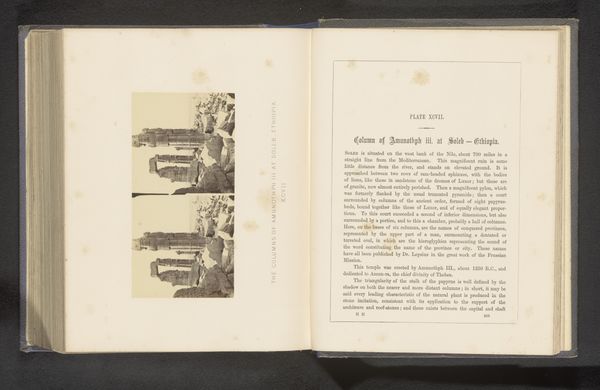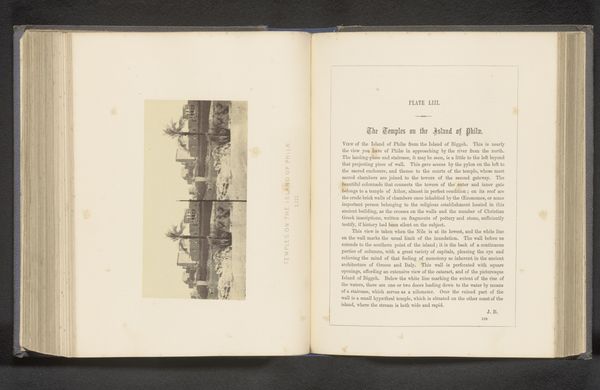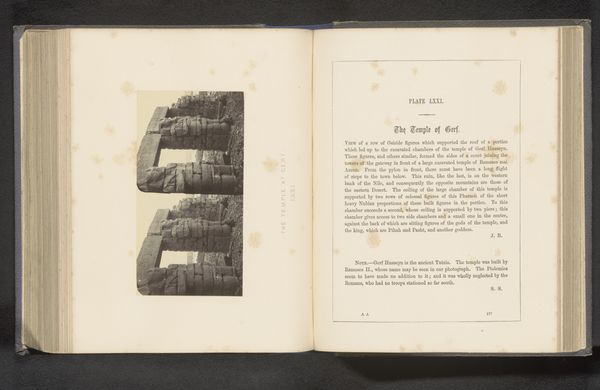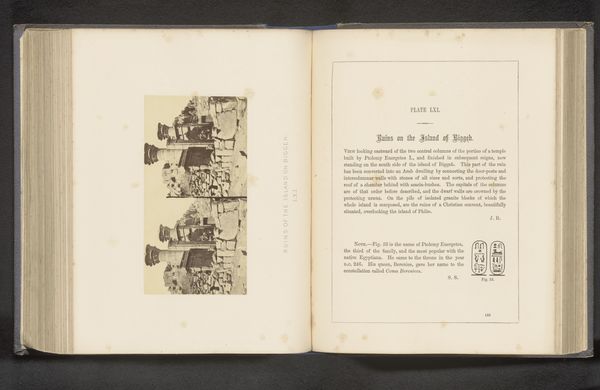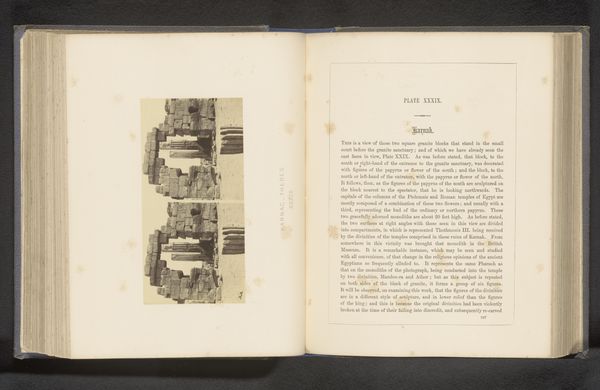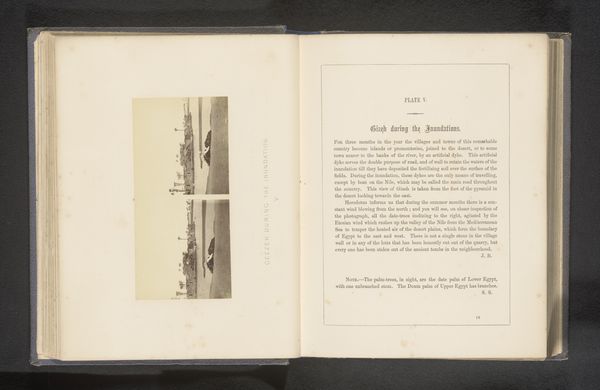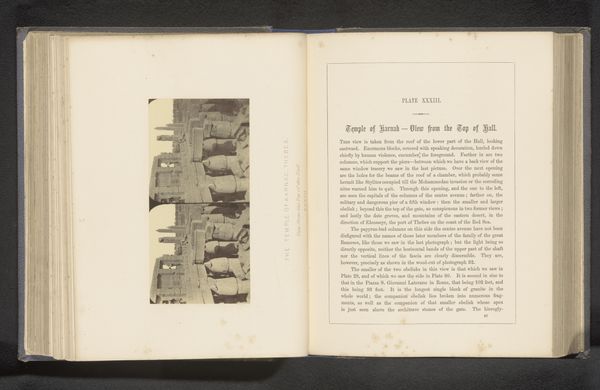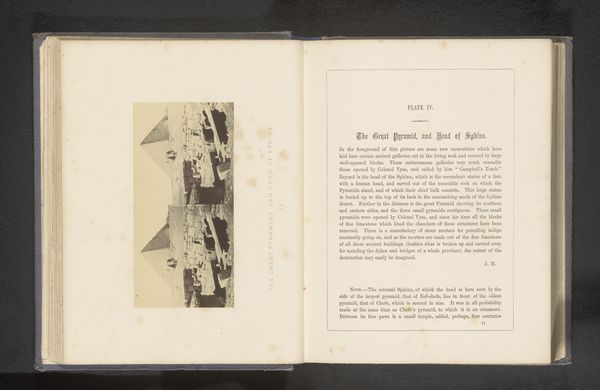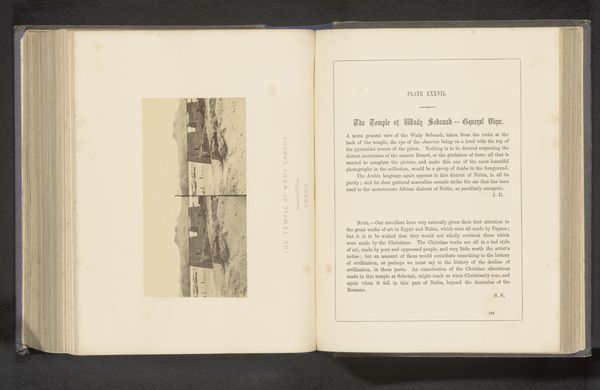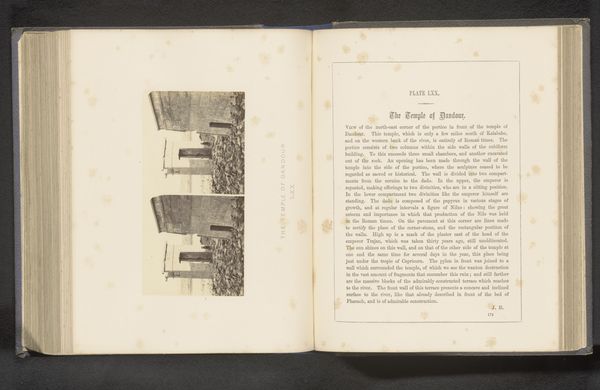
print, photography, albumen-print
# print
#
landscape
#
ancient-egyptian-art
#
photography
#
geometric
#
ancient-mediterranean
#
history-painting
#
albumen-print
Dimensions: height 73 mm, width 141 mm
Copyright: Rijks Museum: Open Domain
This is Francis Frith’s photographic print of the Ruin of the Temple of Amenhotep III. Though we may think of photography as an almost instantaneous process today, in the mid-19th century, when this image was made, it was anything but. The wet collodion process Frith likely used involved coating a glass plate with a light-sensitive chemical emulsion immediately before exposure in the camera, and developing it while still wet. The final print on paper would have then been made by exposing it to sunlight using the glass plate as a negative. What’s so fascinating about this process is that it was highly skilled and intensely manual. It demanded a lot of time, attention, and labor to produce even a single print. In this case, the image-making process gives insight into the relationship between photographic production and wider social issues. Frith was one of the first to commercially produce landscape photography on a large scale for consumption by the Victorian middle classes. Considering the materials, making, and context of this print gives us a much deeper understanding of its cultural value, blurring the boundaries between fine art and craft.
Comments
No comments
Be the first to comment and join the conversation on the ultimate creative platform.
